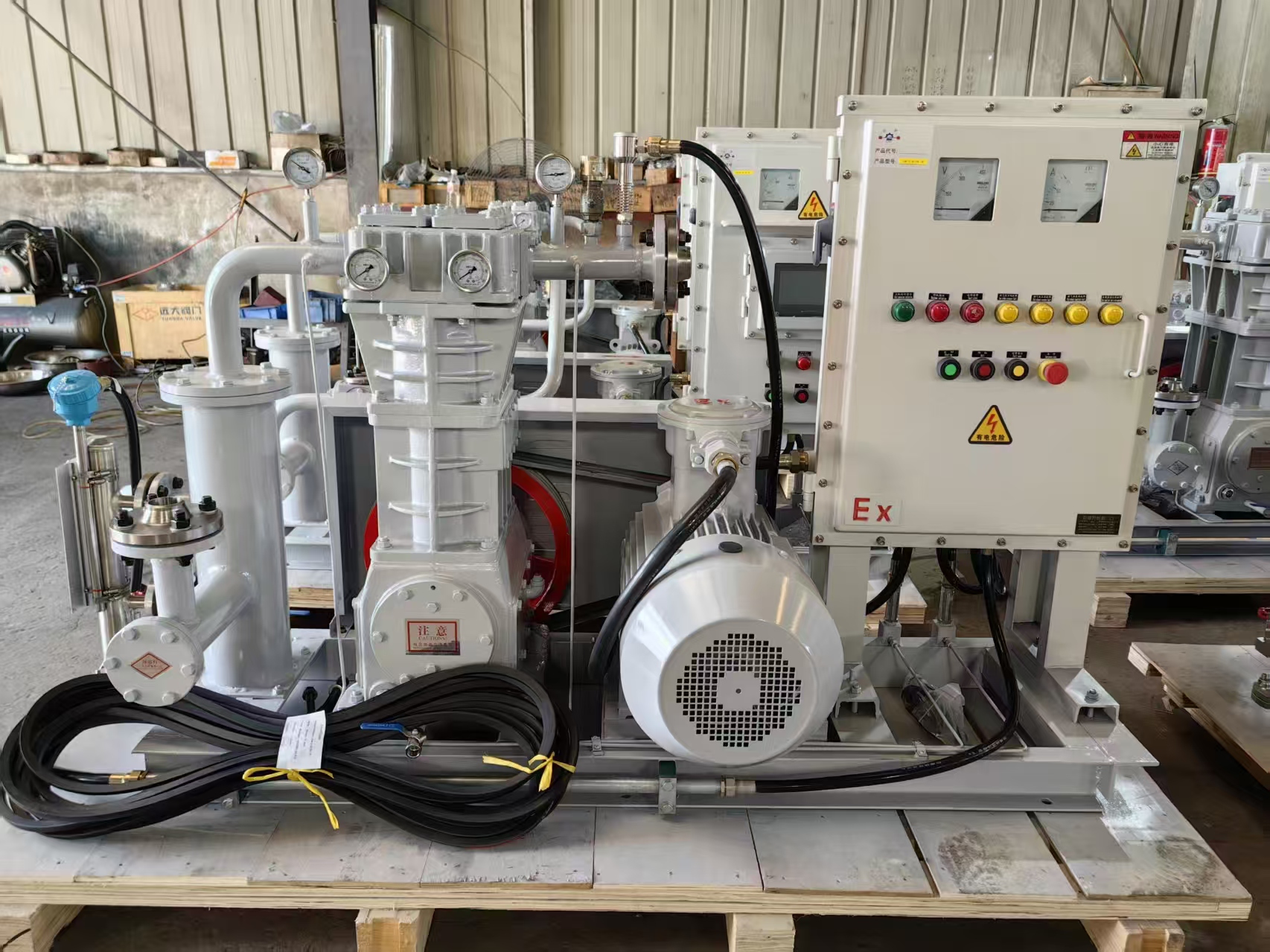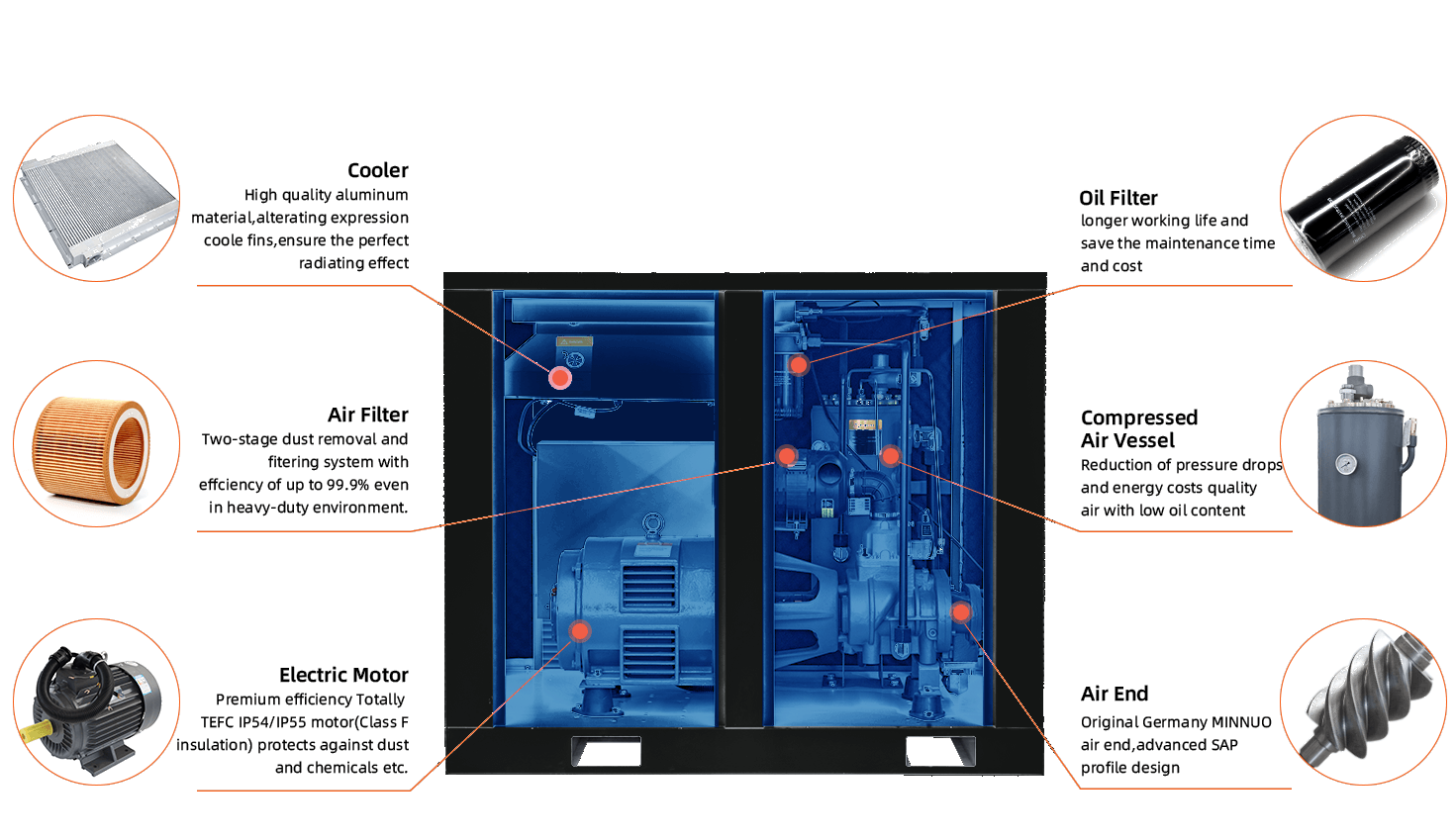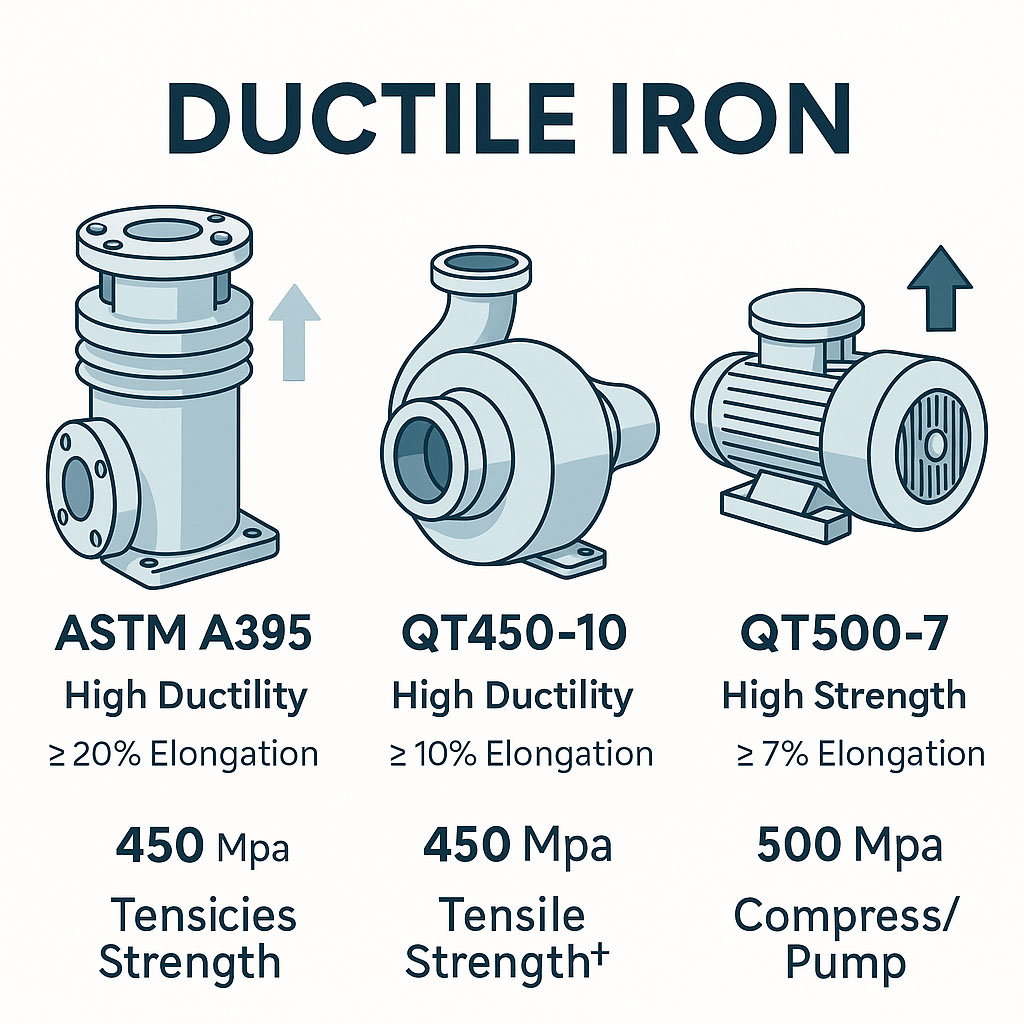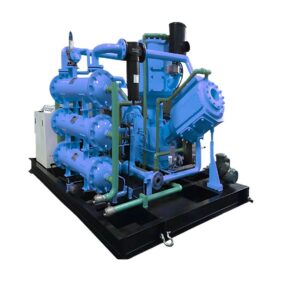بالنسبة للصناعات التي تتعامل مع الغازات عالية النقاء أو الغازات الخطرة - مثل تصنيع أشباه الموصلات أو المواد الكيميائية المتخصصة أو معالجة الهيدروجين - فإن ضاغط غشائي مانع للتسرب ضرورية. تقوم هذه الضواغط بعزل الغاز عن أنظمة التشحيم، مما يوفر ضغطًا خاليًا من التلوث مع أداء ختم فائق . فيما يلي تسع خطوات حاسمة لضمان تلبية نظام ضغط الحجاب الحاجز لأعلى معايير منع التسرب.
دليل من 9 خطوات لضغط الحجاب الحاجز المحكم التسرب
1. حدد وحدات API 618 أو الوحدات المعتمدة من ISO
اختر الضواغط التي تلبي API 618 أو معايير ISO لسلامة مانع التسرب وموثوقية التصميم. وتوفر هذه الوحدات معدلات تسرب تصل إلى 1×10-⁶ سم مكعب/ثانية .
2. استخدام تصاميم متعددة الأغشية، بدون غشاء
اختر تجميعات الأغشية ثلاثية المعادن أو متعددة الطبقات. تعمل هذه التصميمات على عزل طبقات الغاز والسائل الهيدروليكي وطبقات كشف التسرب - مما يمنع التلوث المتبادل .
3. دمج أنظمة كشف التسرب
تثبيت مراقبة مستمرة على غرف الغاز والغرف الهيدروليكية للكشف عن خروقات الحجاب الحاجز في وقت مبكر وإطلاق الإنذارات أو الإغلاق .
4. إجراء اختبار التسرب غير المدمر
إجراء اختبارات مطياف كتلة الهيليوم أو اختبارات الفقاعات بانتظام على الأغشية ومقاعد الصمامات وموانع التسرب الساكنة لتحديد التسريبات الدقيقة قبل حدوث عطل .
5. تحقق من عزم الدوران على براغي التثبيت
تأكد من أن إحكام ربط المسامير على رؤوس الضاغط ضمن حدود عزم الدوران المحددة؛ يؤدي عزم الدوران غير المناسب إلى فشل مانع التسرب .
6. تنظيف وفحص الوصلات الميكانيكية
فحص الحلقات الدائرية الثابتة والقضبان الجانبية ووصلات الأنابيب وصيانتها بانتظام؛ حيث إن موانع التسرب البوليمرية/المعدنية تتقادم بمرور الوقت ويجب استبدالها قبل حدوث عطل .
7. ضمان كفاءة التبريد
الحفاظ على درجة حرارة سائل التبريد المناسبة لمنع ارتفاع درجة حرارة الحجاب الحاجز وتقليل الضغط على السدادات .
8. استبدال الأغشية بشكل استباقي
تتبع عمر خدمة الحجاب الحاجز (على سبيل المثال الساعات أو الدورات) واستبداله قبل حدوث التمزقات الدقيقة الناتجة عن الإجهاد.
9. الاحتفاظ بسجلات مفصلة وسجلات الأداء
سجل إجراءات الصيانة وفحوصات عزم الدوران وقراءات الضغط ونتائج اختبار التسرب وأي إنذارات. يدعم ذلك تحليل الاتجاهات وعمليات الاستبدال التنبؤية .
سبب أهمية هذه الخطوات
تُعتبر ضواغط الحجاب الحاجز ذات قيمة عالية لما تتميز به من نقاوة استثنائية وعدم تلوث الزيت-حرجة في التطبيقات بما في ذلك الغازات السامة/السامة أو المسببة للتآكل أو عالية النقاء أو الغازات المتخصصة . يضمن التنفيذ السليم لهذه الخطوات التسع هذه الخطوات التسع:
-
سلامة مانعة للتسرب (<1×10-⁶ سم مكعب/ثانية)
-
احتواء موثوق به للغازات الخطرة/النقية
-
الامتثال للوائح السلامة والبيئة
-
تحسين وقت تشغيل الضاغط والحد الأدنى من الصيانة غير المخطط لها
✅ حلول جاهزة للنشر من Keepwin
للحصول على حل جاهز، توفر KEEPWIN أنظمة ضغط الحجاب الحاجز المصممة هندسيًا للحصول على أداء محكم ضد التسرب:
-
حزم متعددة الأغشية متوافقة مع واجهة برمجة التطبيقات API 618، مع كشف التسرب
-
موانع تسرب ديناميكية مانعة للتسرب وحلقات O الثابتة
-
أنظمة تبريد مصممة للتحكم الأمثل في درجة الحرارة
-
توثيق كامل لضمان الجودة/مراقبة الجودة والامتثال التنظيمي
يبدأ تحقيق ضغط غشاء مانع للتسرب للغازات النقية بمعدات معتمدة وأنظمة إحكام غلق صارمة وبروتوكولات صيانة قوية. باتباع هذه الخطوات التسع، يمكنك ضمان التشغيل الآمن والموثوق والخالي من التلوث.
👉 اتصل بـ KEEPWIN اليوم للحصول على حل ضاغط غشائي مخصص مصمم خصيصًا لمتطلبات الغاز لديك.











